Naturalist Herder and Arty Kant

Interview by Richard Marshall

'Herder is not a usual naturalist, whatever one thinks it means, nor does he call himself one, since it is a term that becomes current only in the late nineteenth century. I don’t claim to be able to say what naturalism is always and everywhere, but I identify three respects in which Herder is a naturalist – all of which, I think, characterize (more or less) positions that some philosophers who call themselves naturalists today would hold, to some degree or another.'
'I think he didn’t look like a philosopher before to readers because too empirical, too much informed by other disciplines/art/ history etc., not enough pure reason. (In a review, Kant made fun of Herder for suggesting that human beings are distinctive animals because of our erect posture – which in turn is important because it makes possible complex brain structure, Herder argues. People don’t agree on those details, maybe, but I think Herder’s approach to that question, invoking biological configuration and capacity, is pretty close to where a lot of philosophers are today, no longer so laughable.)'
'I think the challenge Kant presents us with here is whether we can articulate a concept of purpose that is fully independent of ideas/intentions – he doesn’t think that we have one or that we can, but he could be wrong about that. Or if not, and one wants to avoid the “as if”, then perhaps one should be a deist – that is, really claim that someone did do all of these apparently purposeful things actually on purpose.'
'An individual’s beauty is no good evidence for their moral goodness. Kant would absolutely agree with that. His view that beauty is a symbol of morality – despite what it may sound like! – concerns a relationship between appreciation of beauty and moral commitment: when I find something beautiful, I appreciate it for its own sake -- I find it pleasing just as it is, just in perceiving it (not for some ulterior motive), and in a way that I think others can share.'

Rachel Zuckert focuses on Kant and his philosophical context, broadly understood: both his eighteenth-century contemporaries, and post-Kantian, nineteenth-century philosophy. Here she discusses Herder, reasons for his relative obscurity, his naturalism, naturalism and culture in Herder, Herder on art, art as embodied naturalism, Kant and the “je ne sais quoi” of art, how aesthetic judgements make universal and necessary claims, comparing the teleological claims of biology and those of the art critic, differentiating between informed and uninformed perception of an artwork, Kant and the associative sublime, beauty as a ‘symbol of morality’, and what inferences Kant drew from the relationship between immortality the existence of God and moral agency.
3:16: What made you become a philosopher?
Rachel Zuckert: From early childhood, I used to lie in bed at night wondering how I could tell if my parents were replaced by robots which looked and acted the same, whether colors looked the same to other people as well, and the like. Then, in my first year in college, I read Descartes’ Meditations, where he vividly portrays skepticism about the external world, asking: what if my ideas (representations, perceptions, experience) do not really match how things are out there, are not caused by those things, but instead are implanted in my mind by an “evil genius”? (Now people sometimes say: by an experience-machine.) How can one tell whether other people really have minds, conscious experience like mine, if all I see is their external body and behavior? I immediately recognized that philosophers were my people. Then we read Kant’s Prolegomena to any Future Metaphysics and I was absolutely, decisively hooked: Kant’s central idea of transcendental idealism – that we can know aspects of the experienced external world to be necessarily true of it because only so could it be experienced by us – seemed to me breathtakingly ambitious and imaginative, necessary to study.
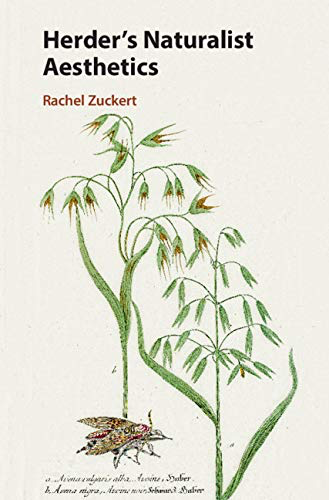
3:16: One of the figures you’ve written extensively about is Herder. For the uninitiated, could you first say something about him – when he was around and why he is an important if a little neglected philosopher?
RZ: Herder was in fact Kant’s student early on in Kant’s time teaching at the University of Kӧnigsberg – so he’s also a German philosopher of the mid- to late 18th century. Unlike Kant, though, he never worked as a professor of philosophy, and left Prussia to live in different German principalities during his varied career as writer, school principal and schoolteacher, Lutheran pastor, and minister of education. He is one of the few philosophers historically who was married (very happily, to Caroline Herder, née Flachsland), and had children. He was not only Kant’s student, but also more informally a student of Hamann’s and Goethe’s friend – though he also fell out, more or less bitterly, with most of his close intellectual colleagues. This divisive spirit also informs his writing: he wrote a lot of polemics (one reason why he is less studied than he might be, they are not always pleasant to read). His works are also varied: he wrote two major works in philosophy of history, This Too a Philosophy of History and Ideas towards a History of Humankind, and essays and books in philosophy of language, philosophy of religion and Biblical hermeneutics, and aesthetics; he also wrote a lot of literary criticism and poetry.
In Germany, he is perhaps best known as a critic or literary theorist who helped (together with Lessing, Goethe, and Schiller, and others) articulate the aims of a modern German literature – or, perhaps more broadly, of German artistic culture. In Anglophone discussions, he is more recognized as an important critic of Enlightenment over-confidence in reason and historical progress: in his philosophy of history, he articulates a vision of valuable cultural and historical diversity – each age has its center of happiness within itself, he famously wrote – and in his aesthetics (and elsewhere), he emphasizes the importance of cultural ritual and shared practices, emotional vitality, sensible vividness and richness, both in art and in human life more broadly.
Another reason why Herder is a bit neglected today is that he is hard to categorize – what kind of philosophy does he do, exactly? Or is he rather a very theoretical historian or cultural critic? Also, he is not a systematic writer or thinker – in some ways, he tries to cover everything (like the whole history of humanity), but he writes in a fragmented, chatty, lively but also wandering style.
3:16: You have argued that he is a naturalist haven’t you. Can you say what you take that term to mean and how he fits into the context of contemporary and near-contemporary philosophical naturalism?
RZ: This is a great question because this term is used in a lot of ways, vaguely, and Herder is not a usual naturalist, whatever one thinks it means, nor does he call himself one, since it is a term that becomes current only in the late nineteenth century. I don’t claim to be able to say what naturalism is always and everywhere, but I identify three respects in which Herder is a naturalist – all of which, I think, characterize (more or less) positions that some philosophers who call themselves naturalists today would hold, to some degree or another:
1) explanatory naturalism: human knowledge, use of language, aesthetic and moral values, cultural practices, etc. etc. should all be explained by reference to laws, forces, objects that exist in nature, not supernatural entities such as God or angels or (Herder thinks) abstract constructs used in philosophy like ‘transcendental ego’ that do not pick out actual living human beings (or any perceptible entity). Often today philosophers in turn say that ‘nature’ here means whatever is described and governed by the laws of physics. I don’t think Herder would agree with that: his conception of nature emphasizes organic forces and vitality more than matter as such, on the one hand, and on the other, he thinks that physics is extremely abstract, and cannot capture the full richness of actual nature as we live in it.
2) methodological naturalism: philosophy should not be just “pure reason” thinking itself, but rather should incorporate and be guided by the empirical findings of other disciplines – including the natural sciences (again preeminently biology for Herder), but also anthropology, religious studies, literature, art history, etc. as they can inform about what human beings are like and how we can be transformed in different contexts. Many Anglophone philosophers today would agree with a narrower or stricter version of this view: philosophers should incorporate and be guided by some, particularly good, particularly scientific subset of empirical knowledge (the natural sciences, perhaps plus economics or psychology or sociology).
3) Normative naturalism: nature, specifically human nature, also establishes what is good. This is the oldest “naturalist” position – Aristotle has some version of it – but it continues to be popular now in a lot of different forms. Herder’s version is (I argue) vitalistic and contextual: what is good for human beings is to fully develop our natural abilities or forces – to be fully vital – in harmony with one another, and with our social and natural contexts. So the good can vary from individual to individual, depending on their different abilities or contexts, though it takes the same overall form (vitality + harmony).
In emphasizing the biological and in aspiring to a kind of holism – philosophy should address and incorporate lots of different discussions, the individual should fit into its social and natural context, etc. – Herder is probably closer to the American pragmatists (like John Dewey), who introduced the term “naturalism,” than he is to contemporary naturalists who tend to privilege “hard” natural science and so also a reductive structure of knowledge (physics is the foundation and describes what really is, and everything should be derived from that, somehow).
Herder is also pretty distinctive in holding all three of these forms of naturalism: many philosophers in ethics who are normative naturalists are not methodological naturalists, nor do they use natural scientific results in their thinking. But I think Dewey maybe aspired to follow all three of these ideas in some way or another (though he was also a Hegelian), and Philip Kitcher is a recent philosopher who is trying to have all three positions too, I think.
3:16: What’s so radical and provocative about Herder’s naturalism?
RZ: In certain ways, I don’t think it’s radical, but more that we have come to a place in philosophical practice where we can appreciate better what Herder was doing: I think he didn’t look like a philosopher before to readers because too empirical, too much informed by other disciplines/art/ history etc., not enough pure reason. (In a review, Kant made fun of Herder for suggesting that human beings are distinctive animals because of our erect posture – which in turn is important because it makes possible complex brain structure, Herder argues. People don’t agree on those details, maybe, but I think Herder’s approach to that question, invoking biological configuration and capacity, is pretty close to where a lot of philosophers are today, no longer so laughable.) But Herder’s naturalism is in other ways strange: he thinks he can and should incorporate views of humanity offered by arts, literature, anthropology, etc. within the empirical investigations informative for philosophy. He is a vitalist, meaning that he thinks nature is fundamentally a bunch of forces, maybe even one ultimate basic force, forming and reforming themselves into different particular objects with capacities. And he sees no conflict between his naturalism and his theism – he was a practicing, if not totally orthodox Protestant – whereas many philosophers today see naturalism and theism as exclusive alternatives. Herder is a capacious thinker and not afraid of tensions or coming close to contradictions; he wants to be accurate to all of factual reality as he finds it.
3:16: Why is his naturalism not in conflict with cultural matters, his attentiveness to and engagement in historical, philological, or anthropological investigation?
RZ: This is an important question too. Partially it is answered (on my account) by stipulation: Herder’s methodological naturalism just is (I say) that he attends to the results of a wide range of empirical investigations, including historical and anthropological, as well as scientific: these also inform us about facts “on the ground” that must constrain any philosophical claims. And partially it is answered by what one might see as a kind of “mushiness” in Herder: for him, we are naturally social animals, so there is not a sharp line to be drawn between the natural and the social. Also nature is various and historical (and human nature more so) – our capacities and forces are always changing, creating new situations, et. and this is just a ramped up case of the way in which nature itself develops new environments, new animal species, and so forth. Herder also does tend to distinguish the social or cultural from the merely conventional – and sometimes is rather critical of the latter, as a kind of artificial choice we make that takes us away from the natural.
3:16: Herder seems to hold two conflicting views about art – he emphasises its cultural embeddeness and historical variation on the one hand, and natural norms of artistic value on the other. Does he manage to resolve the tension between Enlightenment claims of universal, trans-historical and trans-cultural norms of artistic value and having to refer to varied and historically changing cultural institutions and beliefs (such as religion, to choose a central example for Herder and for his better-known successor in this line of thought, Hegel), nor can one articulate their value without reference to social purposes (such as social self-understanding? Doesn’t his naturalism risk forcing him to say that variations are prejudices?
RZ: This again is a very important point, quite accurate concerning a major tension in Herder’s work – but I also think this is a way in which Herder’s aesthetics is powerful, that is, its attention to real tensions, real facts, about art and our appreciation of it: we recognize vast cultural variation in art and aesthetic values and we also think that there can be cross-cultural, perhaps even universal recognition of the value of such art. French impressionism is both very French and beautiful (lots of people, from lots of other places, can and do love it). Most theorists choose one side or another, but it seems to me that Herder is right to try to have both. I identify two ways he does so: aesthetic value pluralism and social self-expression/self-recognition as itself a natural value. That is: there can be a lot of natural values, all equally valuable and natural, but different ones need different circumstances or social settings to be realized – so they will occur or flower at different times/places. Here one could think of athletic prowess as a parallel: swimming or running or leaping etc. are all natural capacities, that can be developed to great excellence, but certain societies may allow them to develop especially well or in particular forms (e.g., long-distance, butterfly, etc.). Just so some societies especially foster excellence in music (or certain styles thereof) or painting, or promote achievement in certain literary forms, and others do not.
And, second, as mentioned above, for Herder, sociality is natural, and so too is the value of one’s “fit” to one’s environment (this is just part of what the good of an organic being is, to develop its capacities, in harmony with its environment), including one’s social environment. I take it that artistic social self-expression and self-recognition are cases of such “fit” or of bringing it about: it forges social bonds (by allowing us all to understand better “who we are,” together) and it creates an environment (an artistic, cultural, social environment) in which one recognizes oneself. This is again a point at which one might worry that the natural is stretched too far, that Herder’s view is (as I said) too “mushy.”
3:16: In arguing for sculpture as an art of touch was Herder trying to articulate a kind of embodied Aesthetics, and does this link with his naturalism?
RZ: Yes! One aspect of Herder’s naturalism is his emphasis on seeing human beings as organisms, as embodied living beings. The sense of touch – in which he includes proprioception, one’s sense of one’s own body and its position – is our sense that connects us most with our physical embodied selves, a sense of and for solid, embodied things. He suggests that if we really enter into the experience of sculpture – paradigmatically figurative sculptures of individual human bodies – we will imaginatively engage our sense of touch both as touching the exterior contour of the sculpture, and inhabiting its body as if it is our own, from inside, and thereby gain an enlivened, heightened, especially pleasurable form of touch-experience, and a renewed sense of ourselves as embodied beings.
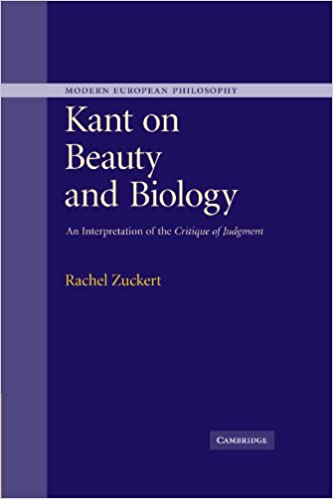
3:16: Kant is of course someone whose aesthetics you have studied and written about extensively. So can you first say something by way of introduction to Kant’s approach to aesthetics. Unlike principles about cognition and morality which he thinks are objective Kant thinks aesthetic judgements are purely subjective doesn’t he? Can you sketch for us Kant’s thinking here – why is aesthetic thinking different from the other two for Kant and why is he so keen to develop the necessity of purposiveness?
RZ: The key difference in aesthetics is what earlier thinkers called the “je ne sais quoi”: we can’t predict which objects we’ll find beautiful, we can’t list the characteristics that all beautiful objects share or that will make any object beautiful. Instead, we just have to experience the object, and find it pleasurable in that experience. In Kant’s terms, this means that we base our judgment on feeling – something subjective, my own sense of things right now, how the object appears to me and how I respond to it – rather than on concepts or rules. In the context of discussing beauty, purposiveness is meant to describe something like a reason why the object is pleasing to me – it seems as if designed for me to experience it, surprisingly orderly, patterned in a graspable way, or, in the terms I used to describe Herder, to “fit” my perceptual abilities.
3:16: How then can Kant claim that aesthetic judgements make universal and necessary claims?
RZ: This is a matter of considerable debate among readers of Kant. I understand his argument to go roughly like this: when I find an object beautiful, my pleasure arises because of the way it is (ordered, patterned, though not in a predictable or rule-governed way), which makes me able to linger perceptually on it, attending to all of its different aspects as they seem to add up with it to a whole (pattern), contrasting and complementing one another – this is what Kant calls the “free play of the faculties.” (Other pleasures arise from other sources, like pleasure from satisfying a need, or pleasure from moral approval of an action.) Kant then argues that all human beings can engage in that kind of “free play” – they too can attend to this object in this way (even if they aren’t doing so) – and even that they should do so, because this free, unstructured attentiveness is the way we should all be oriented to the world, in trying to find orders that are there beyond or different from our expectations, different from the particular aims or agendas we might have. So aesthetic judgments make universal claims on others in the sense that all human beings in principle could also find this object beautiful (as I do), and make necessary claims in the sense that others ought to find it beautiful (because we all ought to be alive to beauty where it is to be found).
3:16: Are the teleological claims of biology the same as those of the art critic ? Is purpose in biology for Kant a similar sort of ‘as if’ sham, but one that we have to have if we’re to have any sort of empirical knowledge?
RZ: The teleological claims made by a biologist are in one way the same as the art critic: both kinds of thinker consider what sort of object the thing is “meant to be” – a turtle or a painting – and determine whether the object has everything it’s supposed to, or is missing something. But in other ways not: the biologist does not really presuppose that someone intentionally made the turtle (i.e. “meant it”) to be a turtle – but only thinks of the turtle “as if” made on purpose – whereas the art critic tends to know that an artist really did make the artwork on purpose. Also, when the biologist judges that some part of the turtle is “for” some particular purpose (e.g., its stomach or whatever it has is “for” digesting), this is part of a larger causal account of what happens within the turtle, what that part does (it breaks down food into nutrients, say).
When an art critic says that a part of the work is “for” something – e.g., a stroke of paint is to balance another color in another quadrant of the painting, say – this usually isn’t about how things work causally but instead about how the object appears or is experienced, or perhaps how it might contribute to meaning. Kant refers to these two different kinds of relation as “material” (causal) versus “formal” (cognitive) purposiveness. You will gather that I don’t really think of Kant’s “as if” (purposiveness) as “sham”, quite, but rather as marking a moment of conceptual uncertainty or tension. Kant thinks we understand what a purpose is in the case of human intentional action (paradigmatically the production of an artifact): I have an idea of what I’ll do (my purpose) and then I do it -- my purpose is accomplished, the product of my action lives up to that purpose = is what it is “meant to be,” and each of its parts is as it is, and contributes to the overall product because I put them there, for that reason.
When we talk about squirrels being as they are “meant” to be, Kant thinks, we aren’t claiming that someone actually made the squirrel according to a prior idea (rather, other squirrels did, and not by following some idea, and in fact the squirrel makes itself again all the time by growing, eating, regenerating). Similarly, when we find something in nature beautiful, we are not ipso facto claiming that God made it so – though we are finding it perfectly suited to, as if designed for, our perception. So – for Kant – we are applying a way of thinking that fits one kind of object/activity, where we get what we are talking about, to another case where it doesn’t quite fit, and we’re not even meaning for it to (we are leaving out one part of our concept, so it is only “as if” the concept applies). I think the challenge Kant presents us with here is whether we can articulate a concept of purpose that is fully independent of ideas/intentions – he doesn’t think that we have one or that we can, but he could be wrong about that. Or if not, and one wants to avoid the “as if”, then perhaps one should be a deist – that is, really claim that someone did do all of these apparently purposeful things actually on purpose.
3:16: Given that he concedes that aesthetic judgement is based on one’s own pleasure, are there any qualifications for engaging in art criticism – can an art critic claim a privileged status, make a special contribution in debates concerning artistic merit?
RZ: Yes, I think so, though this is an undertheorized aspect of Kant’s view since he focuses on natural beauty. But I think one could differentiate between informed and uninformed perception of an artwork: the critic knows what she is looking at, reading, or hearing – and so her pleasure (if pleasure there be) is based on a more accurate perception of the object. I also think the critic could convey that knowledge and her consequent sense of what the object is like, in a way that can enliven and enrich others’ perception, and thereby help other achieve a “free play” of the faculties in response to the work. My sense is that in the real world, this second function is more important in criticism than rendering verdicts on whether something is good or not – critics help us see, they complicate, they enrich, they transform one’s sense of, etc.
3:16: The sublime, as characterised by Kant and Burke, is a bit problematic in that it their accounts it provokes fear – and is aesthetic appreciation is based on pleasure then they have to account for the pleasure in fear tension. Wouldn’t Kant have been better adopting the notion of ‘the associative sublime’ of other thinkers whose account of the sublime doesn’t provoke the paradox of pleasure out of fear so much? Can you sketch for us what this associative sublime was and why didn’t Kant take to this account rather than the one he did?
RZ: Oh gosh, this is a big question, because even though they are broadly contemporaries, talking about the same topic, Kant and the associative sublime folks are pretty far apart. The associative sublime is the name that Timothy Costelloe (a scholar of eighteenth-century aesthetics, and the editor of the collection to which I contributed an essay on this topic) gave to a bunch of theories of the sublime formulated by eighteenth-century Scottish philosophers, now little known: Archibald Allison, Alexander Gerard, Lord Kames (Henry Home), and Dugald Stewart. They did tend to think of the sublime not as an experience involving fear, but rather as an experience of a kind of uplifting mirroring – I see a large object, my imagination (or perception) stretches to fit it; I see a powerful object, I feel myself (imaginatively) energized and greatened by it. And then, they suggest, I might start associating to other ideas of greatness – here one might think of free association or metaphorical linkings, say of this large expanse to the expansive greatness of the sea to the length of eternity to greatness of soul, perhaps.
They also think that objects can come to be found sublime through association – Allison gives the example of the sparrow, made sublime poetically through association, when used as an example of God’s capacious interest in and love for all living creatures, great and small. In any case, this expansiveness of imagination is deeply pleasing in its feeling of enlarging and freeing the mind – and yes, they tend to leave out fear, pain, displeasure, etc. in their accounts. Kant actually does have a glimmer of such ideas in his account: he too says that the imagination expands, feels itself to be enlarged, in our experience of really large objects (what he calls the mathematical sublime), when we are trying to grasp them as a whole, in one comprehensive “look” – this is one way in which he explains the pleasure of the sublime.
But there are at least three reasons why he doesn’t go full bore into association. First, he seems to be trying to explain a different sort of experience and/or he thinks the experience of the sublime feels different – not just a kind of free-floating expansion but in fact a bit terrifying, humbling, dizzying, incomprehensible, etc. at the same time. (Maybe think of a thrilling storm – powerful, exciting, also a little frightening.) Kant also is in general not a fan of imaginative association, and particularly not as a kind of experience supposed to be significant (much less universally required) for others, as he thinks we do with the sublime – we call upon others too to appreciate how large, powerful, exciting, sublime, the object is. By contrast, I may associate to this, that, or the other, given my previous experiences. So what? If that’s what the sublime is, it tells us nothing about the object, nothing about the human condition in general, only about me (Kant would say). And so finally: Kant agrees that we have a sense of expansion, uplift and (for him) beyondness in the experience of the sublime and he wants to explain and vindicate that sense by tying it to the human capacity that he thinks really does take us beyond “mere” nature, our senses, and so forth. That is: not imagination, but reason. There’s more to be said here but I will stop before this gets way way way too long!
3:16: How does Kant explain beauty as a ‘symbol of morality’ –you say that modern doubts about the beauty is good inference is itself a Kantian reflex, so how does reflection on paragraph 17 of the Critique of judgement ‘On The Ideal Of Beauty’ help us understand why Kant thought the inference good despite our qualms?
RZ: Let me unpack the different elements of this question a little. Our doubts about the beauty is good inference rest on the fact that beauty is a matter of how one looks, a surface appearance, whereas goodness concerns one’s state of character, one’s intentions for action and so forth – none of which necessarily shows on the surface (and if it does, it is not clear that it looks beautiful, exactly). So an individual’s beauty is no good evidence for their moral goodness. Kant would absolutely agree with that. His view that beauty is a symbol of morality – despite what it may sound like! – concerns a relationship between appreciation of beauty and moral commitment: when I find something beautiful, I appreciate it for its own sake -- I find it pleasing just as it is, just in perceiving it (not for some ulterior motive), and in a way that I think others can share. Similarly (mutatis mutandis) a moral person is committed to doing the right thing for its own sake, because it’s good not just for him but for everyone, not because it serves some ulterior purpose. So appreciation of beauty doesn’t guarantee moral commitment, but it is analogous to morality – and maybe, for that reason, educative towards morality (by getting one to appreciate something else for its own sake, say, or distancing oneself from narrow self-regard).
Paragraph 17 is in turn really weird: after Kant has argued that there are no rules of beauty, we have to judge beauty by pleasure, in experience of the singular thing – over and over again – Kant now says that he is looking for a fixed standard of beauty, which (he claims) is a combination of an image of the average person – where one combines all faces one has seen into a kind of composite, average image – and the expression of moral qualities. (Kant knows that this procedure would not produce the same image for everyone – depends on which people you’ve seen before – but apparently thinks it is ok if each of us has a standard image, just a different one.) I have no idea how to square this proposal with his views about beauty: apart from it being unclear how to introduce a fixed standard into Kant’s theory, the average-looking person who expresses moral character (maybe looks dutiful and kind or hopeful and determined?) just doesn’t seem like a standard, by which we would judge everything else to see if it is beautiful. But I argued in an essay that maybe it can help us to understand something else: why the very standard trope of beauty is good in artistic representation – or why a good person is represented as beautiful -- might be morally ok from a Kantian point of view (even though the inference of beauty is good is questionable with respect to real people). I was really struck here by work in psychology on, yes, producing averaged images, which are then judged to be “attractive” by most subjects in experiments. (This has been done in different cultures, with averaged images of people from those cultures.)
In particular I was struck by the fact that these (manufactured, computer-generated images of) people are not extremely, especially beautiful – they are good looking, but in a symmetrical, smoothed-out and sort of blah, in fact “average”, every-person sort of way (as one might expect but the results are nonetheless striking to see). I proposed that insofar as they are average-looking, such looks would also appropriate symbolize – that is, be analogous to, and in this case give a sort of sensible form to – morality on Kant’s view: when we act morally, he think, we are supposed to act as anyone would, as all could, not to make ourselves an exception. This suggestion doesn’t solve all the puzzles concerning Kant’s position – and it certainly doesn’t make the beauty as good inference ok (outside of artistic representation) – but maybe it describes and reflects where Kant was “coming from,”: maybe, really, he was trying to make sense of the canonical, accepted beauty of Greek figurative sculpture. And maybe it describes the standard good looks often privileged in Hollywood actors.
3:16: And pivoting from this to a further issue arising from Kant’s position on morality, why did he think beliefs in the immortality of the soul and the existence of God undermined moral agency and that they should rather be understood as regulative ideas rather than propositions – matters not of belief but hope?
RZ: Kant was worried that if one knew about God and immortality, then one would do the right thing for reward or out of fear of God – not just because it was right. Kant nonetheless does argue actually that moral agents should believe in God and immortality to support their moral striving: it might be discouraging to think that moral aims – for justice in the world and for perfectly good moral character in oneself – will never be accomplished, and he thought that belief in God (who arranges the world to help us accomplish justice together) and immortality (to give us endless time to keep on trying to be good) would prevent that discouragement. I have argued, though, that Kant should have downgraded (as it were) the beliefs even further, to hope – moral agents should not outright believe, but hope for God’s existence and the immortality of the soul. I think he should have been worried that belief in God would lead to moral complacency: God has sorted the world out already, so I don’t have to do anything myself. And the belief in immortality might be just as discouraging: I have to keep on striving forever? The tentativeness of hope, I think, is more accurate about the attitude a moral agent needs to have towards the world, a way of opening up a prospect towards a future different from how it has been so far, without committing to any definite answers: things can get better, I can get better; I have another moment to try.
3:16: And finally for the readers here at 3:16, are there five books that you can recommend that will take us further into your philosophical world?
RZ:
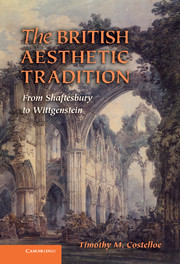
Timothy Costelloe, The British Aesthetic Tradition (Cambridge University Press) – a really nice, informative survey of many different positions across a long swath of history, about aesthetics

J.G. Herder, Selected Writings on Aesthetics, trans. G. Moore (Princeton University Press) – most of Herder’s most important writings in aesthetics, in a good translation.
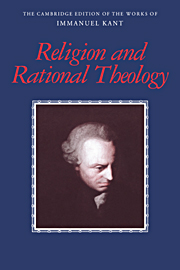
Immanuel Kant, “On the Miscarriage of All Trials in Philosophy,” – an essay available in the Cambridge University Press translation of Kant’s writings on Religion and Rational Theology – a great essay outlining the problem of evil and arguing that one should not try to solve it.
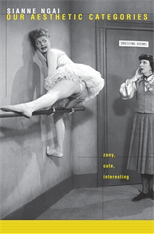
Sianne Ngai, Our Aesthetic Categories (Harvard University Press) – an updated version of the 18th c. project in aesthetics, trying to formulate aesthetic categories of our time, describing works of our time.
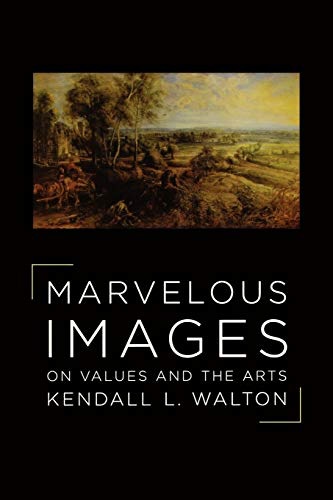
Kendall Walton, Marvelous Images (Oxford University Press), especially the essay, “How Marvelous” – philosophical reflections by one of the most prominent aestheticians in the US, who writes out of his love for art, as does Herder; I read this essay recently and found it so exciting!

ABOUT THE INTERVIEWER
Richard Marshall is biding his time.
Buy his second book here or his first book here to keep him biding!
End Time series: the themes
Huw Price's Flickering Shadows series.
Steven DeLay's Finding meaning series
NEW: Joseph Mitterer's The Beyond of Philosophy serialised